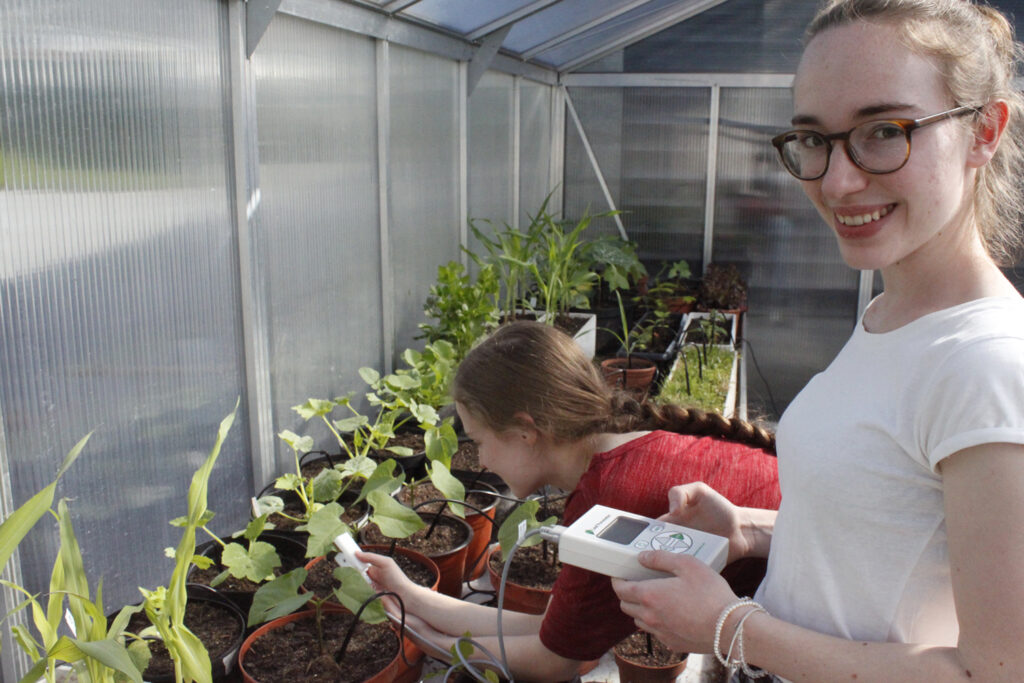A report by Thomas Werner, Biology Lecturer at KSWE
In Switzerland we have been aware of the rapid decline of glaciers for decades. Due in part to the climate strikes of pupils (Fridays for Future), global warming is now a topic occupying every high school. In addition to rising sea levels, dying coral reefs, crumbling mountains and more intense storms, a warmer climate will also be affecting agriculture in our region in a certain way. Depending on whether our CO2 emissions are massively reduced within the next 10 years or we follow the previous trend, the summer months in the north-east of Switzerland in 2085 will be on average between 1.5 and 5 degrees Celsius warmer than today and also get much drier (MeteoSwitzerland, ETH Zurich, http://www.ch2011.ch/).
The project idea
But what does this change mean for crop growth in agriculture and forestry? The idea at our school was that students of the 3rd class, in the context of a project or their matura theses, can deal with this question experimentally. Together with the plant nursery of the monastery Wettingen, two greenhouses with a temperature difference of about 3 to 4°C were set up, with the same plants being planted in each greenhouse in a drier and a wetter compartment. The task for the students should be to document and interpret the development of these plants using different methods. In addition to externally visible features such as shoot length, number of shoots, flower formation, root length, leaf size or biomass, physiological aspects such as transpiration, efficiency of photosynthesis (red fluorescence measurement) or chlorophyll content should also be measured.
The complete report from the Cantonal School of Wettingen can be found here.





